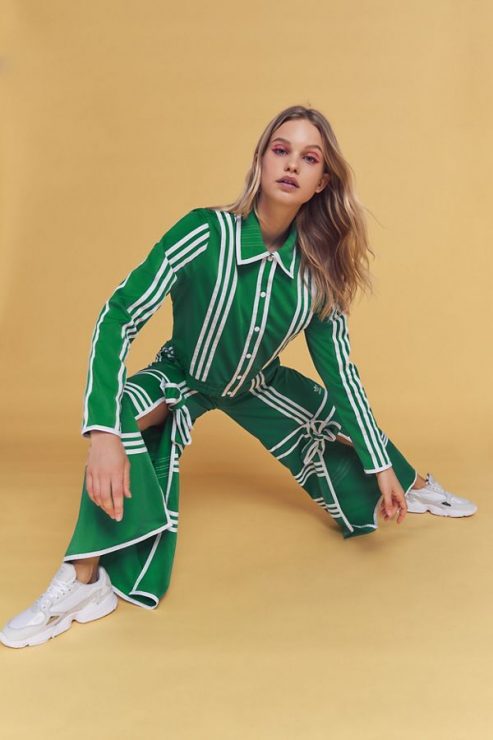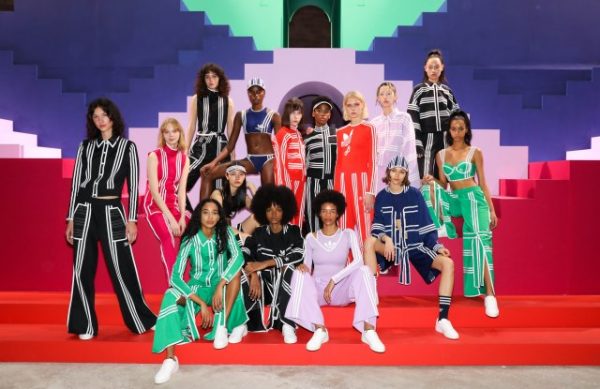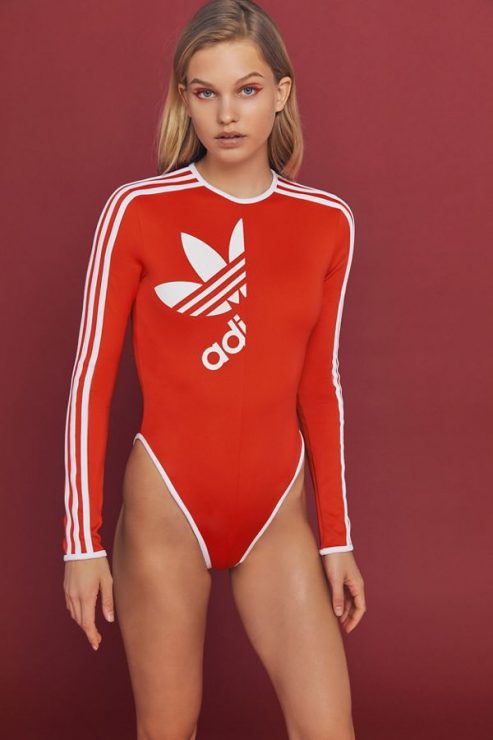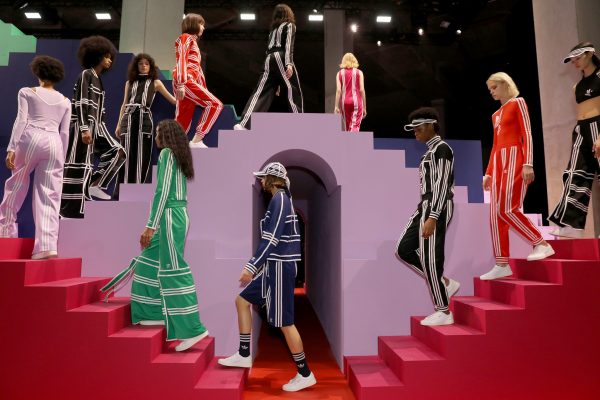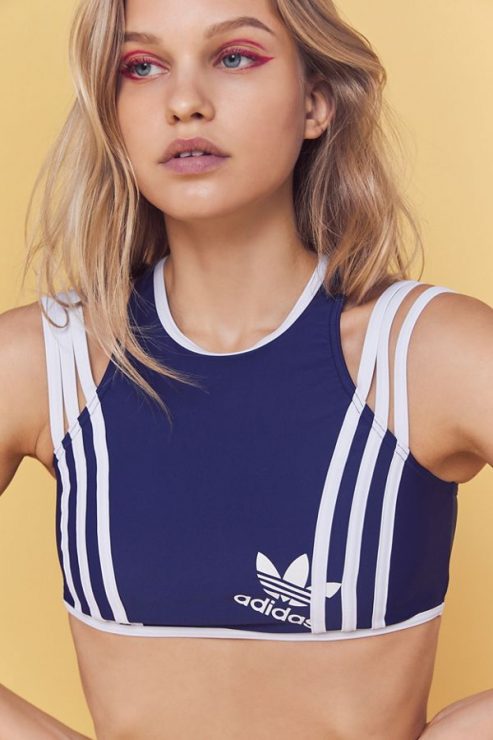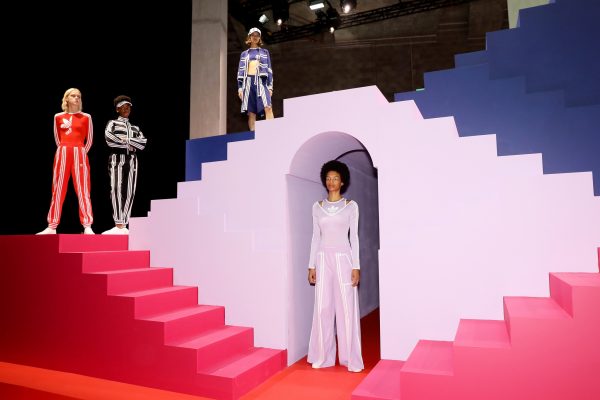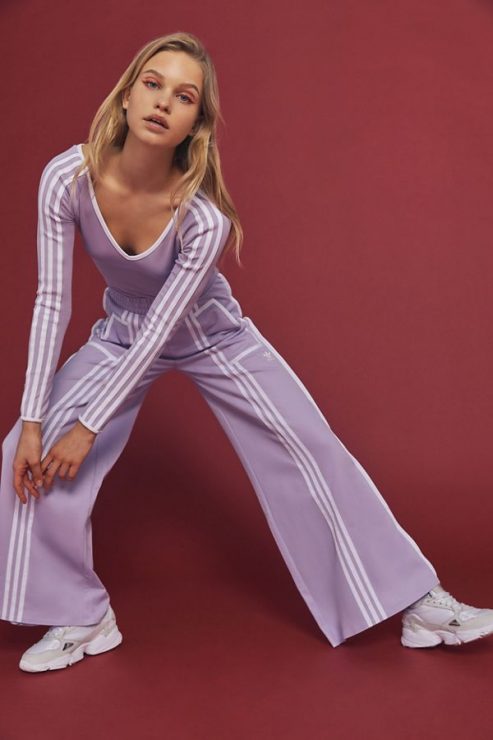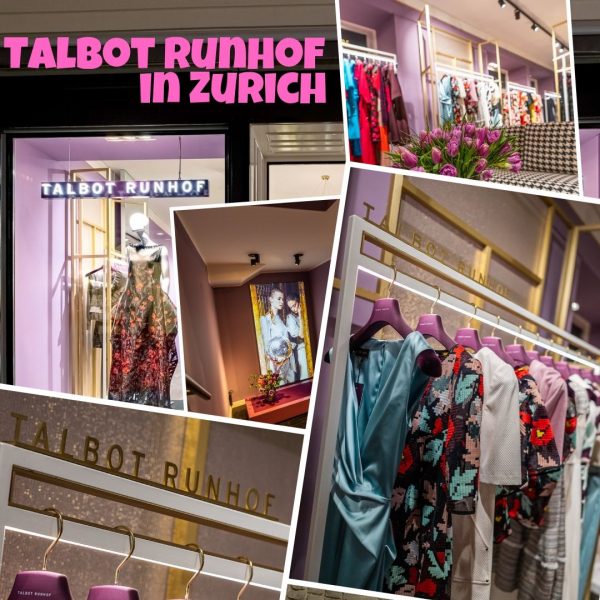
Munich-based designers Johnny Talbot and Adrian Runhof left careers in engineering and fashion consulting to launch their own label, which is defined by luxurious fabrics and elegant silhouettes.
After Munich, Dusseldorf and Berlin, TALBOT RUNHOF finally opened their first exclusive salon in Switzerland in partnership with Maison Gassmann, a local fashion institution since 1882, that has carried the brand since many years. To celebrate the occasion, an opening party took place that was a lot of fun!
 With Johnny Talbot (left) and Adrian Runhof (right) at the opening party.
With Johnny Talbot (left) and Adrian Runhof (right) at the opening party.
The interior design of the new store by Patrick Ferrier makes customer feel like they are at home. It blends in perfectly with the beautiful location – the medieval «House to the Golden Sheep» in the old town of Zurich. Warm purple and gold tones create an elegant atmosphere alongside the original wooden floors and cool retro chandeliers. On the ground floor, you can find the whole collection, including beautiful evening wear with flattering gathered details and rich colors, while the basement serves as a generous VIP area for the ultimate and discreet shopping experience.
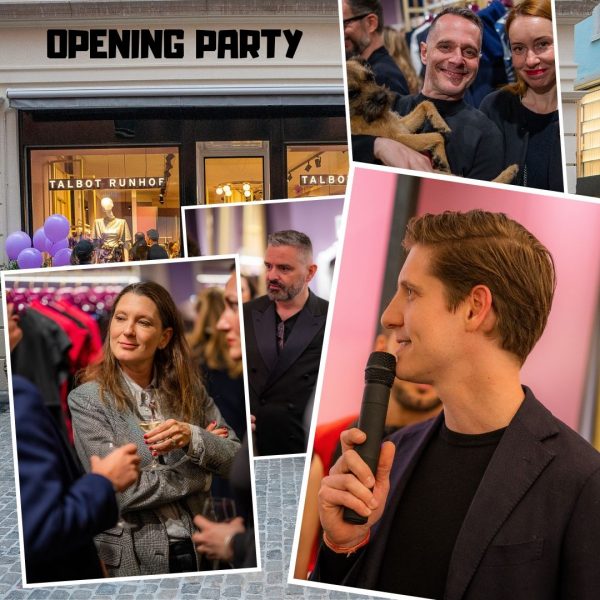
«We are part-time Swiss,» says Adrian Runhof, «so it was on top of our bucket list to finally open a boutique in Zurich. With Katja and Michael Hahnloser we have ideal partners and longtime friends to realize this dream.»
Adrian, you have been living in Switzerland now for almost a decade? Why did you move here and how do you like it?
I live predominately in Munich but happily spend a considerable amount of time in Switzerland. For approximately the last 10 years, we have a wonderful apartment overlooking Lake Zurich where we often go hiking and swimming, preferably with our border terrier, Cooper. Without a doubt, Switzerland has an unbeatable quality of life… quality of air… quality of nature… quality of EVERYTHING…
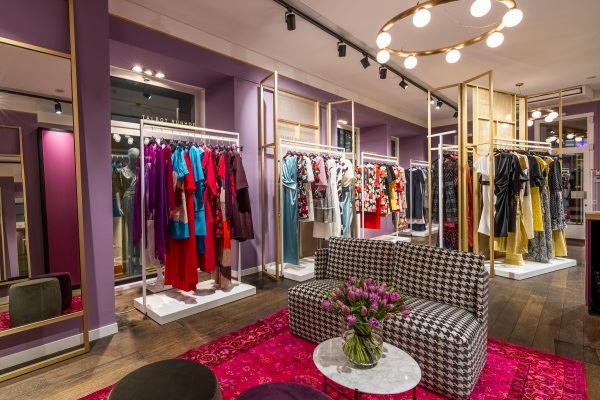
Zurich marks the opening of your 4th store and the first one in Switzerland. You opened it in partnership with Maison Gassmann that have been carrying your designs since many years. Can you tell me a little bit about the story behind?
Katja and Michael Hahnloser from Maison Gassmann have been been carrying TALBOT RUNHOF in the their boutique for many years now. What started as a business relationship has developed into a very close friendship. They are young, cool, creative and enthusiastic; always up for a challenge.
How would you describe the Swiss fashion/clothing style compared to other PoS for example? Is the buying different from your other stores?
Our swiss customers are definitely risk takers… always looking for that special piece. That statement piece. That piece that requires a keen eye for fashion.
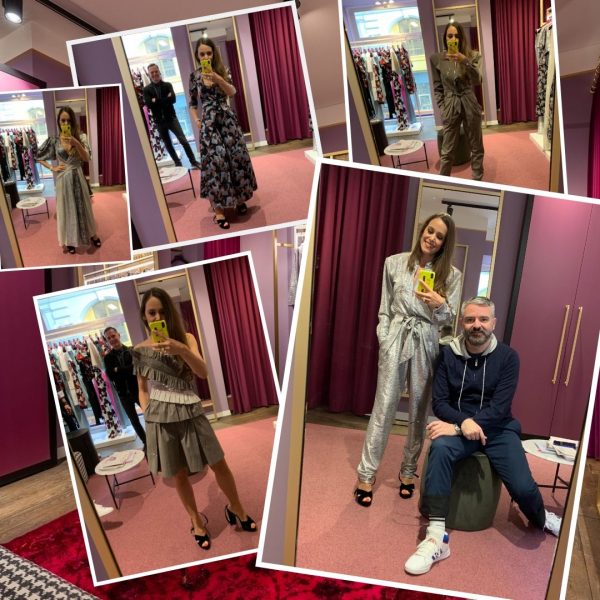 Choosing my outfit for the opening night with Johnny & Adrian.
Choosing my outfit for the opening night with Johnny & Adrian.
TALBOT RUNHOF is known for creating amazing bespoke gowns. Can the Swiss ladies meet you in person from time to time? Do you offer the same service as in Munich for example?
Now that we have a boutique in Zurich, the frequency with which I have a bowl of pasta at BINDELLA, go swimming at the HÜTTENSEE or simply hang out in our boutique in SCHIPFE 4 has increased dramatically. For me it is that perfect balance of work and pleasure.
Our wonderful team in our boutique in Zurich offers exactly the same service as in our other three boutiques in Germany… what a lot of people do not know is that TALBOT RUNHOF is a 100% MADE IN GERMANY product. So if a dress is not available in your size or color, more often that not, we can make it within a reasonable amount of time.
 In love with my TALBOT RUNHOF jumpsuit in silver.
In love with my TALBOT RUNHOF jumpsuit in silver.
How can I imagine the creative process between you two?
Over the last almost 30 years, Johnny and I have developed a very special way of working together. We never went to fashion school. We never learned how to be fashion designers. It’s a very unconventional yet intuitive ping pong game we play, batting around an idea until we feel it is right for the TALBOT RUNHOF customer.
Who would you love to see in your dresses?
For us, our customers are the real celebrities.
Thank you, Adrian, for your time and insider on the Zurich store opening.
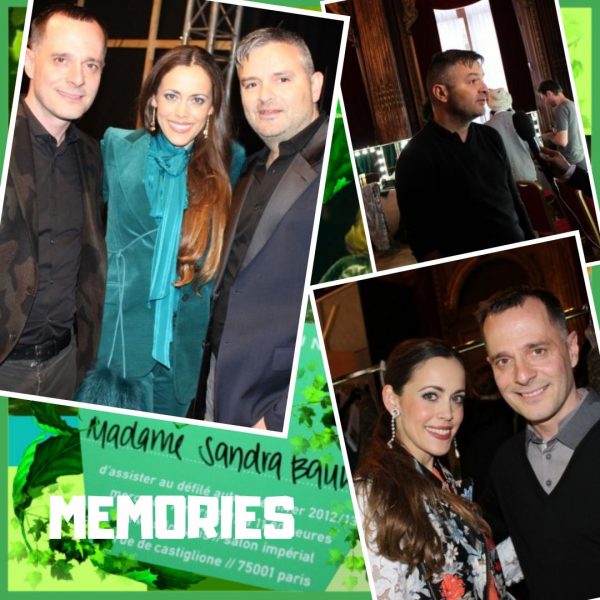
I have been a big fan of TALBOT RUNHOF since the beginning. Originally, the company, founded in 1992, was called «All About Eve». In 2000, it was renamed in TALBOT RUNHOF, to match the faces behind and due to trademark issues, as Wolfgang Joop had already launched a perfume of the same name on the market.
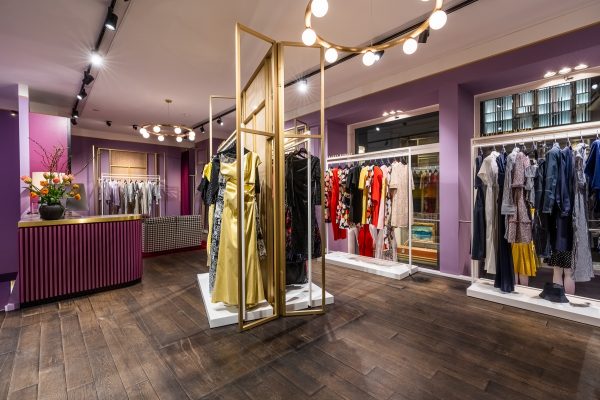
The designer duo catered to the huge demand for modern evening dresses in the ’90s and built up a core of loyal customers over the years. Their small store and atelier in Munich was located close to ESMOD, where I studied fashion design at that time and I always admired their work as a young student. So you can imagine, that it is a real honor that our paths have crossed over the years again and again… businesswise and privately.
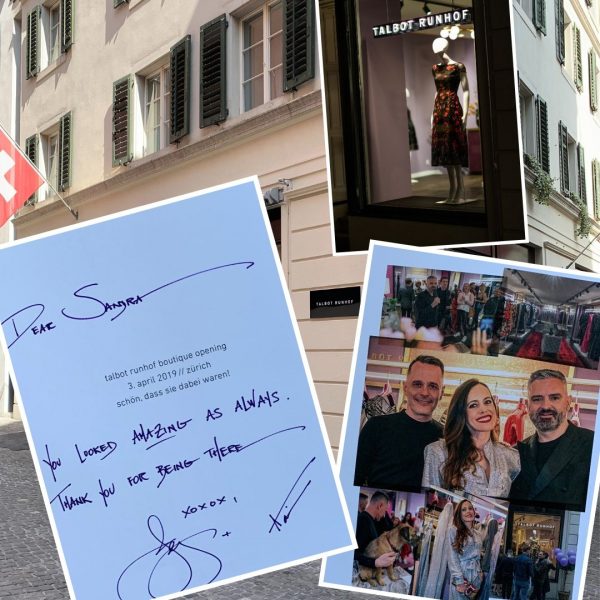
Talbot Runhof Boutique Zurich
Schipfe 4, 8001 Zurich
Phone +41 44 533 88 04
Opening hours: Monday to Friday 10 am to 6.30 pm
Saturday 10am to 5pm
TO SHOP TALBOT RUNHOF ONLINE, CLICK HERE PLEASE.
LoL, Sandra
 Part of the family, Cooper, the cutest dog ever!
Part of the family, Cooper, the cutest dog ever!
Photos: © Talbot Runhof and © Sandra Bauknecht

 Putri Soediono
Putri Soediono






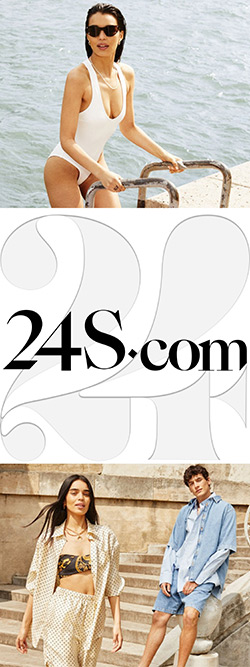




 With Johnny Talbot (left) and Adrian Runhof (right) at the opening party.
With Johnny Talbot (left) and Adrian Runhof (right) at the opening party.

 Choosing my outfit for the opening night with Johnny & Adrian.
Choosing my outfit for the opening night with Johnny & Adrian. In love with my TALBOT RUNHOF jumpsuit in silver.
In love with my TALBOT RUNHOF jumpsuit in silver.


 Part of the family, Cooper, the cutest dog ever!
Part of the family, Cooper, the cutest dog ever!

 Charlotte Casiraghi, H.R.H. Princess of Hanover, Andrea Casiraghi and Madame Emmanuel Macron paying tribute to Karl Lagerfeld.
Charlotte Casiraghi, H.R.H. Princess of Hanover, Andrea Casiraghi and Madame Emmanuel Macron paying tribute to Karl Lagerfeld. Pianist Lang Lang at Karl Forever at the Grand Palais in Paris.
Pianist Lang Lang at Karl Forever at the Grand Palais in Paris. The Steinway designed by Karl Lagerfeld on display.
The Steinway designed by Karl Lagerfeld on display.

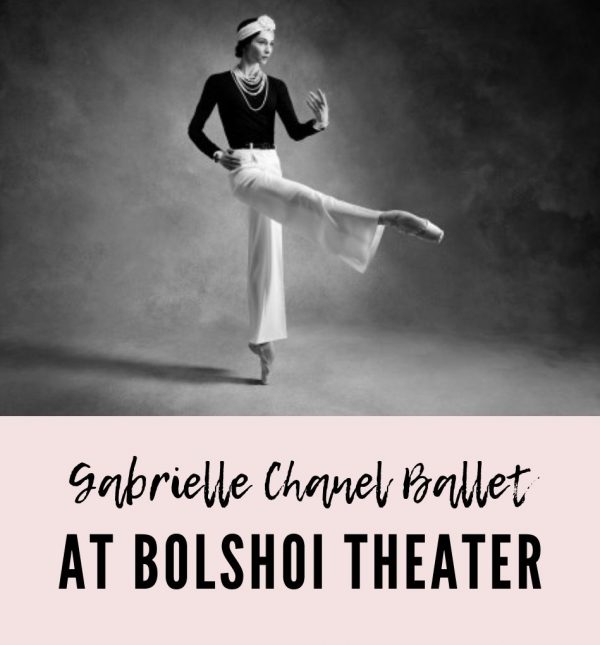
 Inside the famous Bolshoi Theater.
Inside the famous Bolshoi Theater. Hotel Metropol Moscow, seen from the Bolshoi Theater.
Hotel Metropol Moscow, seen from the Bolshoi Theater. Inside the newly renovated Metropol Hotel Moscow.
Inside the newly renovated Metropol Hotel Moscow. Coco Chanel with Ballets Russes dancer Serge Lifar.
Coco Chanel with Ballets Russes dancer Serge Lifar. Two dancers of the Ballets Russes in costumes by Coco Chanel, from 1928.
Two dancers of the Ballets Russes in costumes by Coco Chanel, from 1928. 




 With Peter Dundas
With Peter Dundas Beyoncé in Dundas at the 2017 Grammy Awards
Beyoncé in Dundas at the 2017 Grammy Awards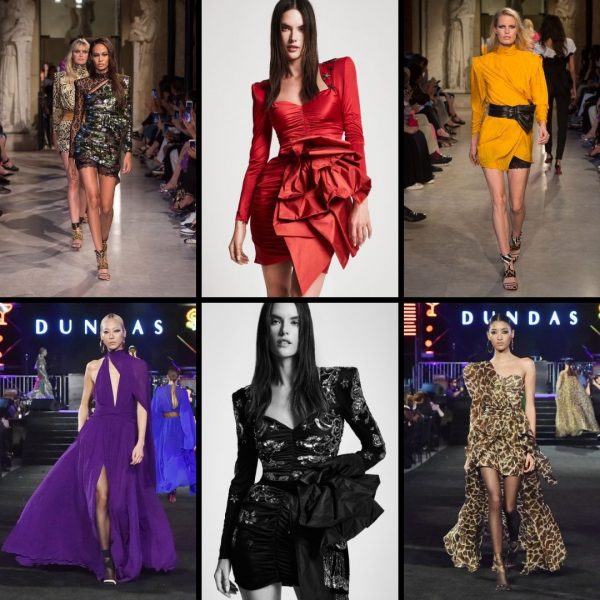
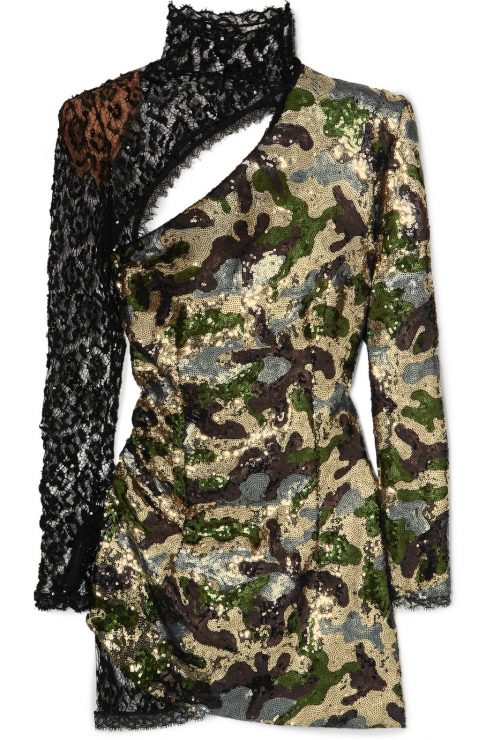
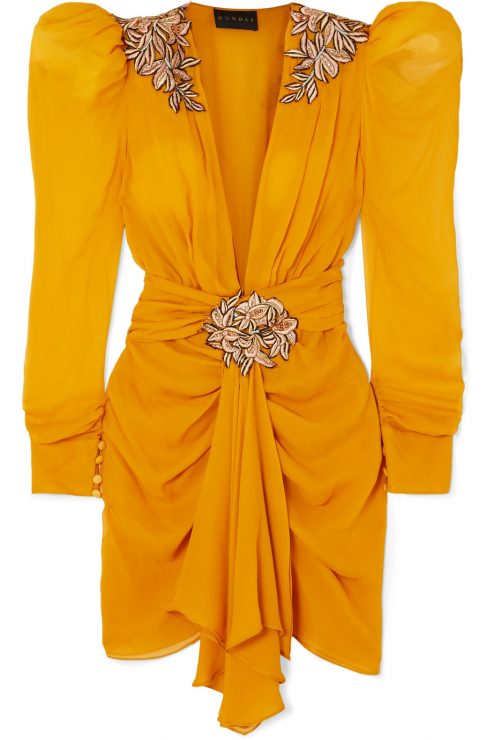
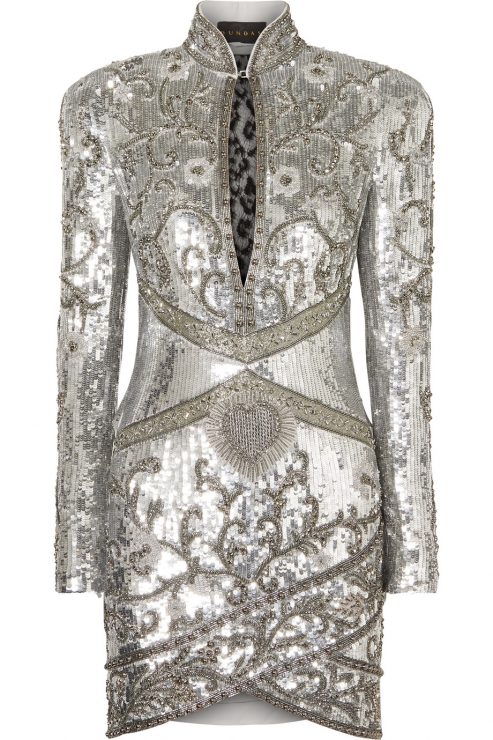


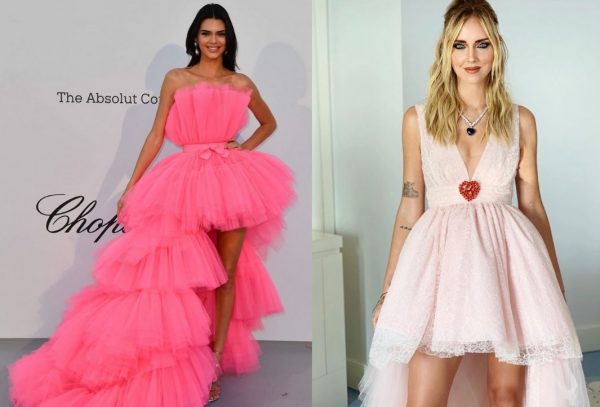 Kendall Jenner and Chiara Ferragni tonight at the amFAR
Kendall Jenner and Chiara Ferragni tonight at the amFAR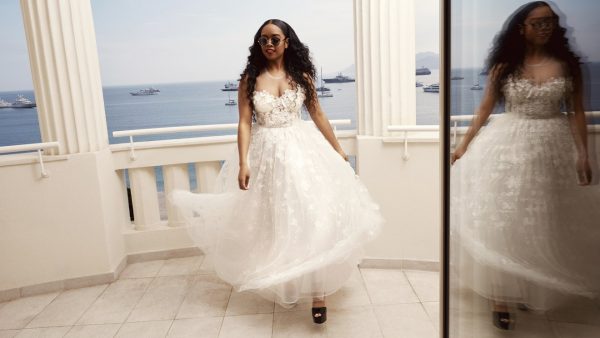 H.E.R. in Giambattista Valli x H&M
H.E.R. in Giambattista Valli x H&M Look 1 – CHF 349.00
Look 1 – CHF 349.00 Look 2 – CHF 649.00
Look 2 – CHF 649.00 Look 3 – Top CHF 179.00 and Skirt CHF 129.00
Look 3 – Top CHF 179.00 and Skirt CHF 129.00 Look 4 – CHF 649.00
Look 4 – CHF 649.00 Look 5 – CHF 249.00
Look 5 – CHF 249.00 Look 6 – CHF 499.00
Look 6 – CHF 499.00 Look 7 – Blazer CHF 249.00 and Pants CHF 119.00
Look 7 – Blazer CHF 249.00 and Pants CHF 119.00 Look 8 – Blazer CHF 249.00 and Shorts CHF 79.95
Look 8 – Blazer CHF 249.00 and Shorts CHF 79.95 Look 9 – Top CHF 49.95 and Shorts CHF 79.95
Look 9 – Top CHF 49.95 and Shorts CHF 79.95



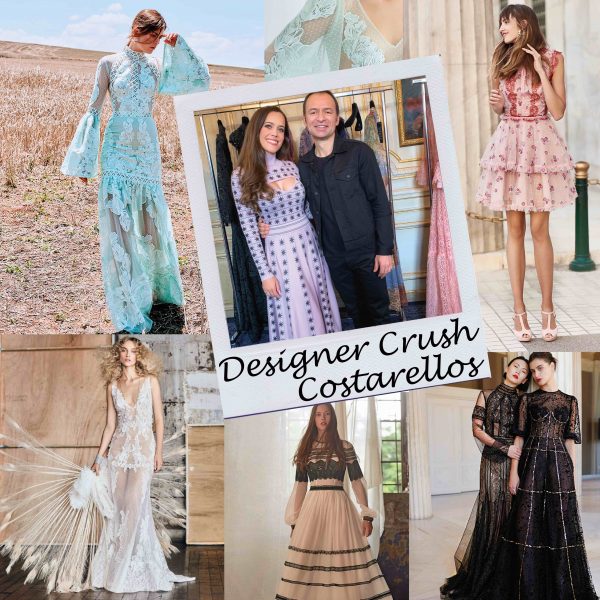
 Wearing Costarellos last month in New York (for the outfit post, click
Wearing Costarellos last month in New York (for the outfit post, click 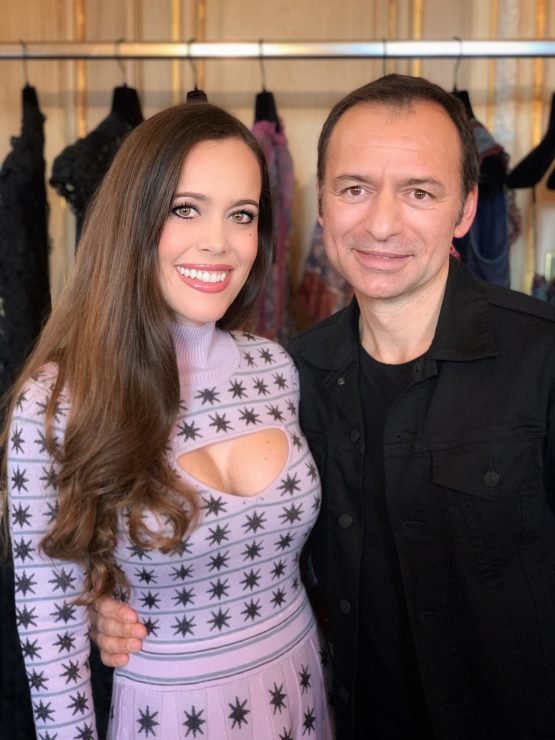
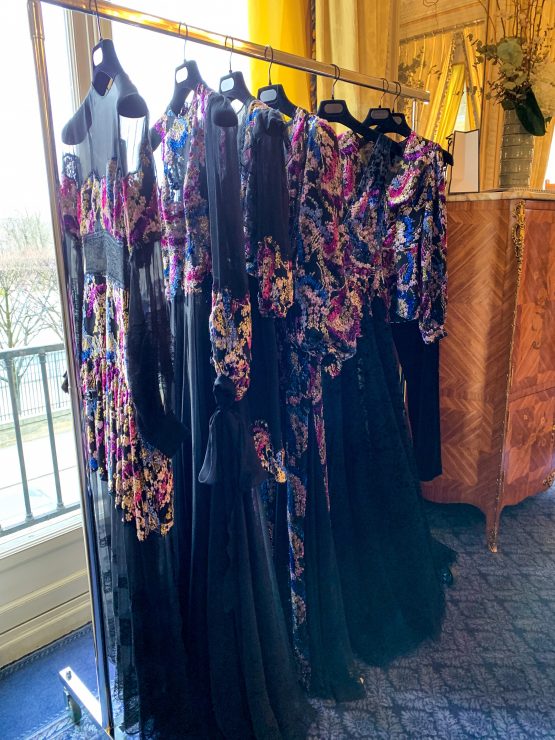
 Costarellos F/W 2019
Costarellos F/W 2019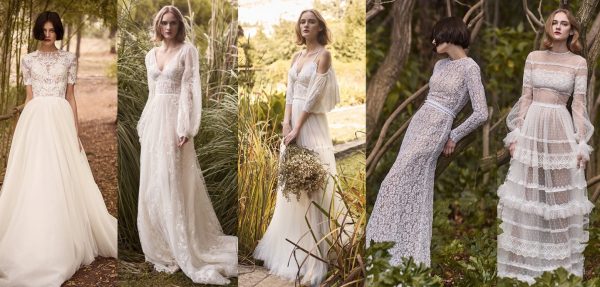
 Costarellos Bridal Wear (different seasons)
Costarellos Bridal Wear (different seasons)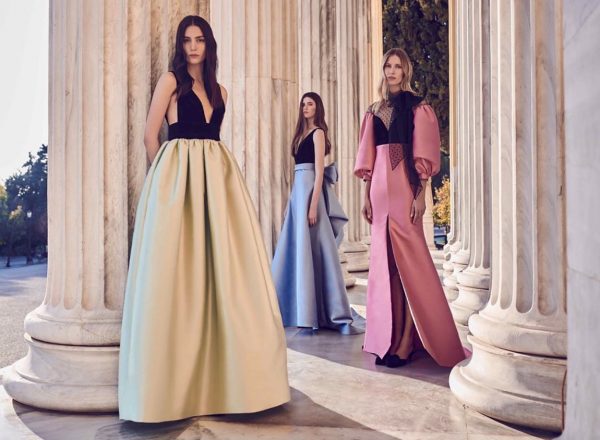 Costarellos F/W 2019
Costarellos F/W 2019 Costarellos F/W 2019
Costarellos F/W 2019 Costarellos F/W 2019 (have a look at the sleeves below – such great craftsmanship)
Costarellos F/W 2019 (have a look at the sleeves below – such great craftsmanship)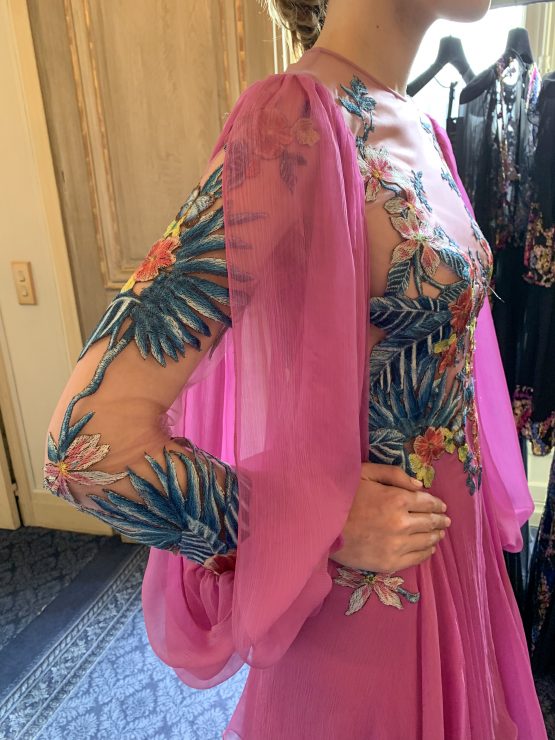
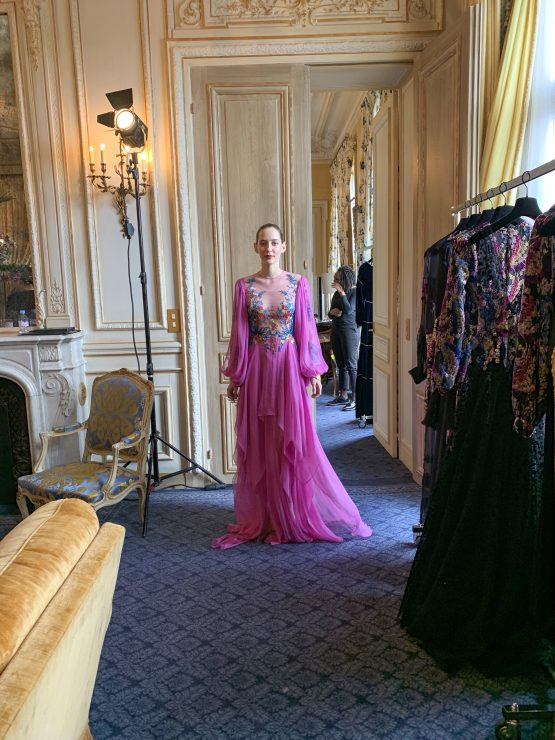
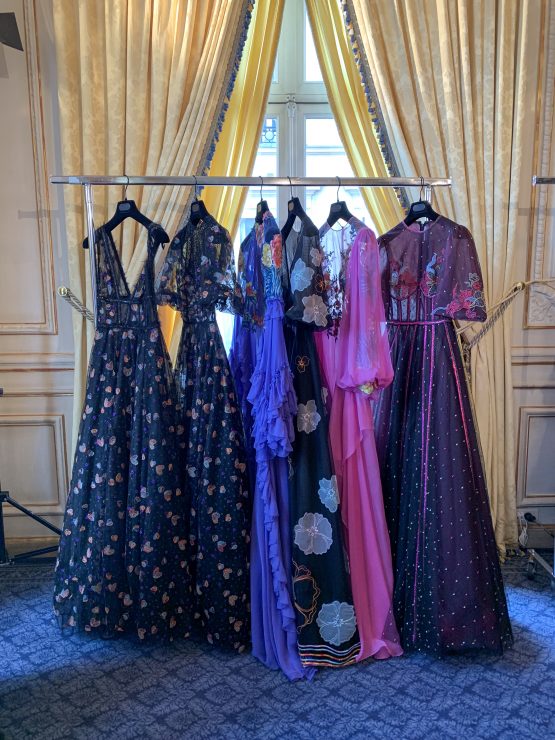
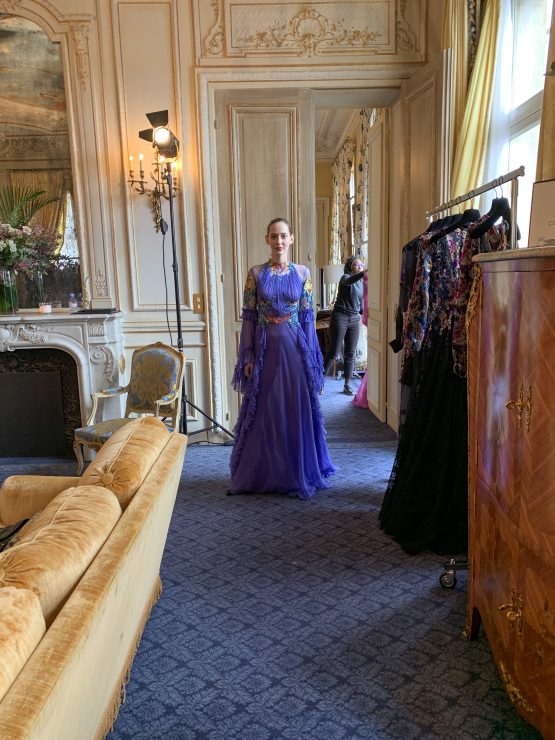
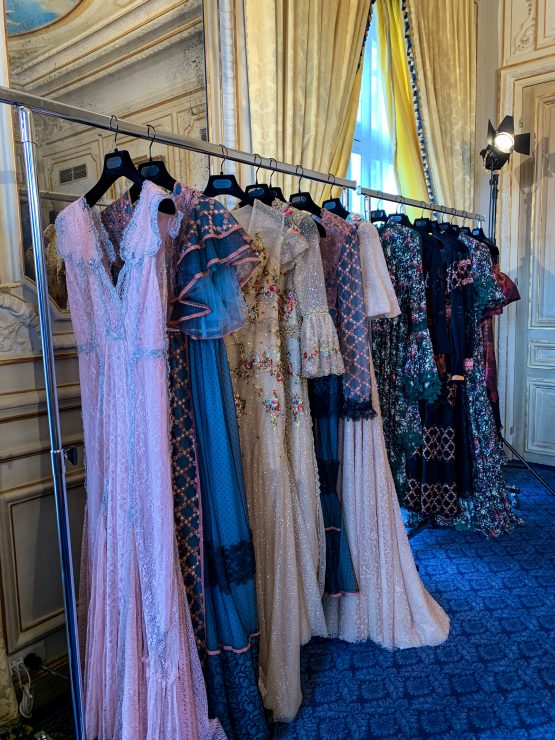
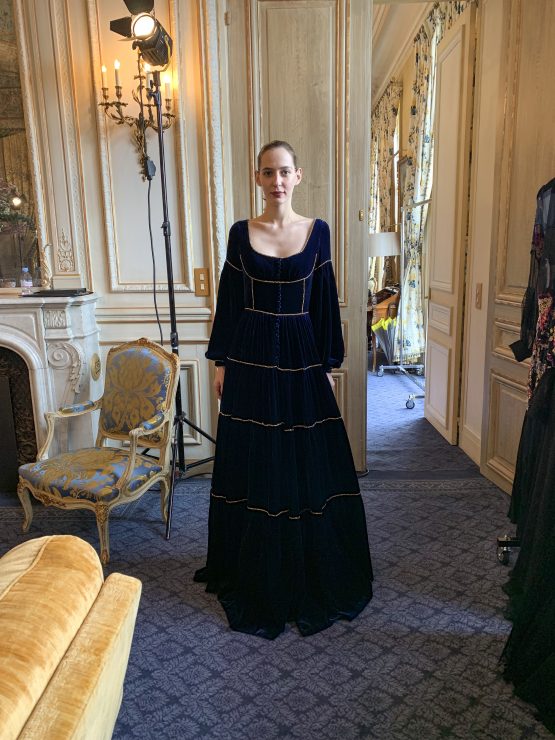
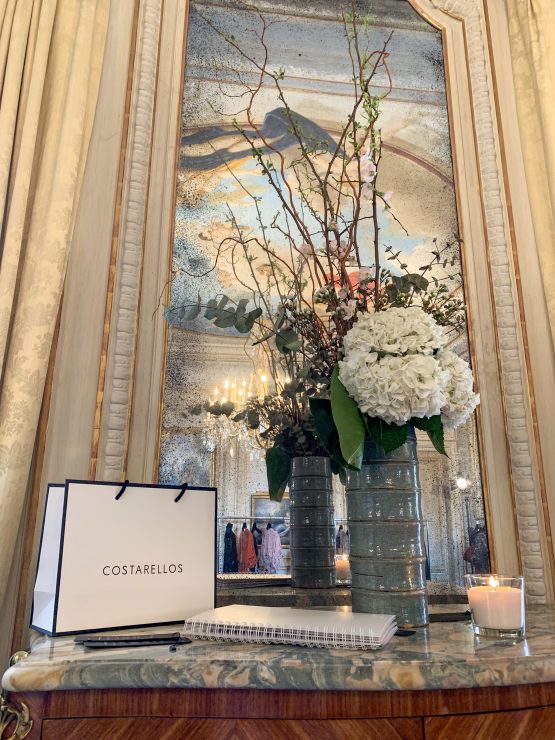
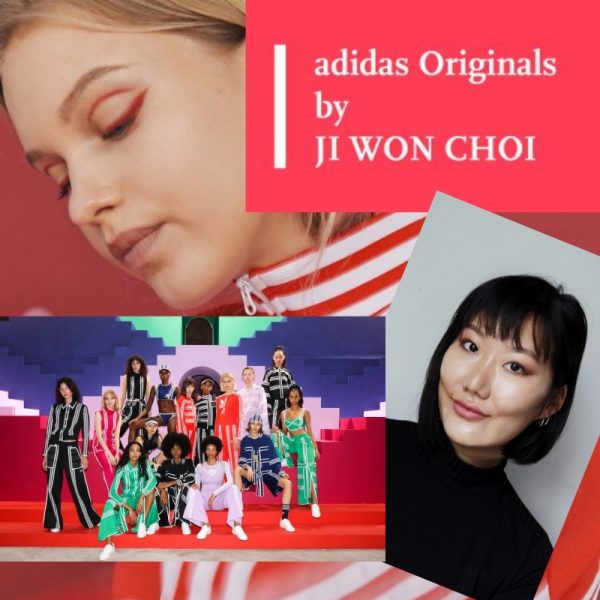
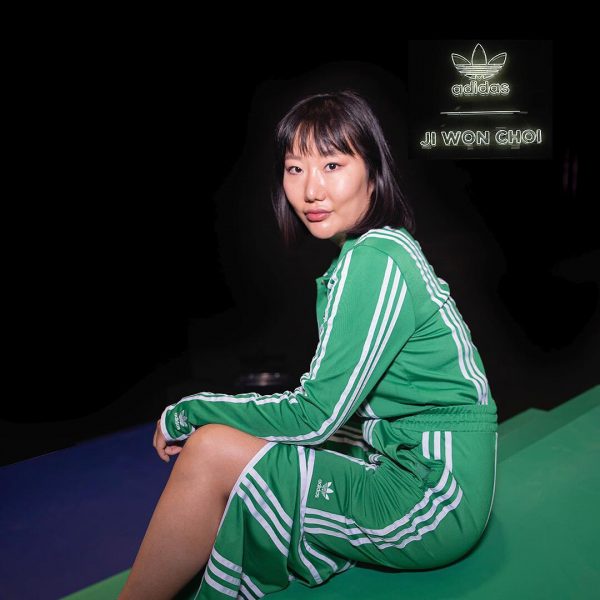 One to watch: upcoming Korean designer Ji Won Choi
One to watch: upcoming Korean designer Ji Won Choi